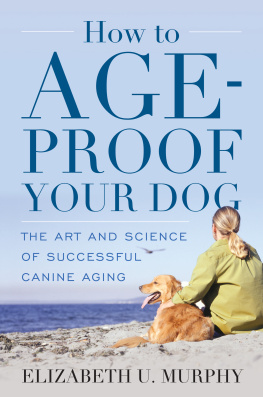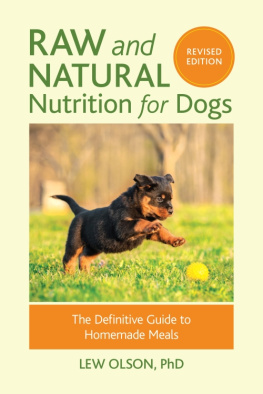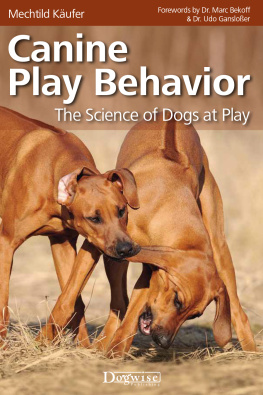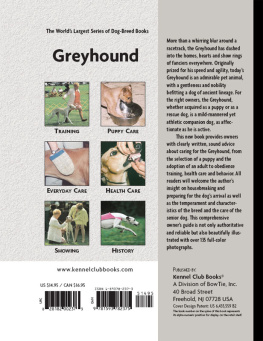

Linda P. Case earned her B.S. in Animal Science at Cornell University and her M.S. in Canine/Feline Nutrition at the University of Illinois. She teaches companion animal science and behavior in the Department of Animal Sciences and College of Veterinary Medicine at the University of Illinois. She owns AutumnGold Consulting, which provides technical writing services on the topics of companion animal care, behavior, and nutrition. She and her husband also own and operate AutumnGold Dog Training Center, in Mahomet, Illinois. Ms. Case is the author of numerous academic articles on companion animal care, nutrition, and behavior and is the author of two other books: Canine and Feline Nutrition: A Resource for Companion Animal Professionals (Mosby Yearbook, 1st edition 1995, 2nd edition, 2000), and The Cat: Its Behavior, Nutrition and Health (Iowa State Press, 2003). She is a member of Delta Society and the Association of Pet Dog Trainers (APDT) and is a certified instructor with the National Association of Dog Obedience Instructors (NADOI). She and her husband share their lives with three dogs and three cats and enjoy distance running, hiking, and traveling with their dogs.
Illustrations by Kerry Helms
2005 Blackwell Publishing
All rights reserved
Blackwell Publishing Professional
2121 State Avenue, Ames, Iowa 50014, USA
Orders: 1-800-862-6657
Office: 1-515-292-0140
Fax: 1-515-292-3348
Web site: www.blackwellprofessional.com
Blackwell Publishing Ltd
9600 Garsington Road, Oxford OX4 2DQ, UK
Tel.: +44 (0)1865 776868
Blackwell Publishing Asia
550 Swanston Street, Carlton, Victoria 3053, Australia
Tel.: +61 (0)3 8359 1011
Authorization to photocopy items for internal or personal use, or the internal or personal use of specific clients, is granted by Blackwell Publishing, provided that the base fee of $.10 per copy is paid directly to the Copyright Clearance Center, 222 Rosewood Drive, Danvers, MA 01923. For those organizations that have been granted a photocopy license by CCC, a separate system of payments has been arranged. The fee code for users of the Transactional Reporting Service is 0-8138-1254-2/2005 $.10.
First edition, 1999 Iowa State University Press
Second edition, 2005
Library of Congress Cataloging-in-Publication Data
Case, Linda P.
The dog : its behavior, nutrition, and health / Linda P. Case.2nd ed.
p. cm.
Includes bibliographical references and index.
ISBN 0-8138-1254-2 (alk. paper)
1. Dogs. 2. DogsBehavior. 3. DogsNutrition. 4. DogsHealth. I. Title.
SF426.C375 2005
636.7dc22
2004022582
The last digit is the print number:
987654321
In memory of
Those who are no longer with us in life, but who are forever in our heartsFauna, Stepper, Roxie, Gusto, and Sparks. We love and miss you all.
Dedicated to
Nike, Cadie, and Vinny Binny Vanilla Bean, who continue to bring laughter, joy, and love to our lives.
Preface
TODAY, about 40 percent of households in the United States share their homes with at least one dog, comprising a total of more than 61 million dogs. The multibillion dollar pet food industry and the more than seven billion dollars that pet guardians spend on veterinary care each year provide tangible evidence of the increasing importance that dogs have in our society. This devotion is further illustrated by the continued growth of the pet supply industry, which includes increasing numbers of pet super-stores, play-parks, training centers, and doggie day care centers in many communities. The bond that human caretakers have with their dogs and the many health benefits that are afforded by this bond have been the topic of numerous research studies in the past 30 years. The dog as a cherished companion and family member is here to stay, and many caretakers, students, and companion animal professionals are eager to learn more about mans best friend, Canis familiaris.
The Dog: Its Behavior, Nutrition and Health is a comprehensive study of the domestic dog. This book is written for people who are either pursuing or are currently engaged in a profession or avocation that involves dogs. Dog trainers, breeders, kennel owners, veterinary technicians, veterinarians, and other companion animal professionals will find this book to be an indispensable resource. In addition, The Dog: Its Behavior, Nutrition and Health is an essential text for college students who are studying the physiology, care, behavior and nutrition of companion animals. The book is divided into four topical sections. Part 1, Mans Best Friend: The Animal within the Companion, examines the origin of the relationship between humans and dogs and follows the development of the dog from the first stages of domestication through present day. This section also includes basic information about the dogs physiology, structure, reproduction, and genetics. The status of the dog today and the importance of proper pet selection and responsible guardianship are discussed in the final chapter of this section. Part 2, Behavior: Communicating with Mans Best Friend, examines the developmental behavior of the dog from birth to adulthood. Species-specific behavior patterns are examined, followed by a discussion of breed specific behaviors. Learning process and principles of training are the topic of Chapter 8. Basic tenets of learning are first reviewed, followed by an examination of successful training methodologies. Various training principles are compared and contrasted, and practical examples are provided throughout the chapter. The final chapter in this section identifies several common behavior problems and their solutions. Part 3 concerns Health and Disease: Taking Care and Keeping Fit. Infectious and non-infectious diseases and common internal and external parasitic diseases are included. Types of vaccines, procedures for their use, and new information regarding recommended vaccination schedules are discussed. The final chapter in the section reviews emergency care and first aid procedures that are essential skills for all pet care professionals and dog caretakers. Part 4, Nutrition: Feeding for Health and Longevity, provides an overview of the dogs nutrient requirements and examines available pet foods and methods of feeding. Detailed instructions for feeding throughout the dogs life cycle and criteria for the selection of optimal pet foods are included. The final chapter of the book reviews common medical disorders that can be treated or managed through diet.
The first edition of this book was completed by the author in 1998 and was published by Iowa State University Press in 1999. In the six-plus years since its completion, numerous research studies and academic journal articles have been published on the topics of companion animal domestication, breeding, behavior, training, health care, and nutrition. All four sections and most chapters of this second edition have been updated with new information from recently published journal papers and books. These revisions will serve to provide college professors and companion animal professionals with the most up-to-date information possible in the field of companion animal science.
This new edition of The Dog: Its Behavior, Nutrition and Health offers the reader extensive information and technical depth in a readable and user-friendly format. The book is intended not only as a helpful resource, but also as an enjoyable and interesting exploration of the domestic dog, our relationship with him, and the best methods of caring for him. The knowledge gained can only strengthen the well-established and enduring bond that exists between dogs and their human caretakers in our culture today.
Next page










